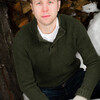I took German in high school, instead of Spanish, because I thought it would be funny. After all, saying “ambulancia” (“ambulance” in Spanish) is nowhere near as stimulating as crying out “krankenwagen!” A lot of other students had the same idea, and despite the protestations of Frau Jensen, our middle-aged, traditionally dressed teacher of all things Deutschland (German for “Germany”), we all played with the new language more than we put it to good use.
A common refrain to most questions, regardless of subject matter, from the dear Frau was, “Nein! Am Dienstag” — uttered with the most pronounced accent we could muster. The phrase means “No! On Tuesday,” seldom the answer the teacher sought. Somehow we were serious enough to pass the class and get the required language credit to graduate and enter college.
In college, my brain was battered by Greek and Hebrew — particularly Hebrew, which started at 7:30 a.m. and whose weak verbs pack entire sentences into a couple dots underneath a squiggle. Exactly what a sleepy intellect wants consider at first light. A second dose of biblical languages assaulted me in seminary, and by that time I had enough acquaintance with the language to avoid causing any exegetical1 casualties during sermons.
Now, having begun my journey as a Ph.D. student, I am confronted with more language to learn — but it isn’t exactly foreign. Whenever embarking on a new subject to study, joining a new company or interacting with any new people-group, you quickly discover that foreign languages can exist within the same language. Take for example this miserable paragraph from my readings:
“If I say what I have said here in this way to an audience, it may affect one or two, and why? Because this is direct communication, I do not reduplicate, I do not execute what I am lecturing about, I am not what I am saying, I do not give the truth I am presenting the truest form so that I am existentially that which is spoken” (Tietjen, p. 50).
This quote, taken from Soren Kierkegaard, was used in a book in which one Kierkegaard scholar debates the positions of other Kierkegaard scholars, required about five readings before I understood it — and it is written in my native tongue.2
The technical terms of my field are stretching my vocabulary, my perspective and hopefully my brain cells. Whereas I once viewed “$10 words” like “existentialism,” “a rhetorical othering” and “homophily” as superfluous, I now appreciate their specificity in referring to concepts and experiences that would take scores of common words to describe. Even common words, within academic journals, are highlighted if they take on special meanings within a given study. The process of learning the vocabulary, and its finer nuances, is both exhausting and exhilarating.
So why am I mentioning all of this?
It's because this process of learning language — whether it’s your ABCs in elementary school or your alpha, beta, gammas in graduate Greek — applies to how we share Jesus with others.
This week, during a debate over women’s ordination, I saw a fellow Christian post, “The Bible requires no interpretation” — with several “likes.” It isn’t a new sentiment.3 The irony is that the Bible is translated (“interpreted”) from one language into another in order for us to read it in the first place. As culture shifts and language changes, language needs to be interpreted.
In the book Speaking of Jesus, the author writes, “One of the most interesting things about Christendom as a culture is that it has developed … its very own language, including different dialects. It seems that every time a branch group or new denomination develops, it creates its own unique personality, including diction. Specific terms and keywords and catch phrases, all with varying levels of importance” (Medearis, ebook).
Seventh-day Adventism is no different. Whether it's the customary “Happy Sabbath” or our unique assortment of in-house abbreviations (WO, GC, GYC, SDA, etc.) only we understand, a newcomer to the faith has some language to learn … and so do we.
In an increasingly post-Christian culture, those sitting beside us at work, or in church, are increasingly theologically and biblically illiterate. Phrases like “we all know” and “we’re all familiar with” are no longer responsible utterances from pulpits hoping to connect with those Jesus wants us to connect with.
This means we have learning to do. As people called to love the Lord with all-out minds and to spread the gospel to “every language” (Rev. 14:6) — and as a tradition that places a high value on education — we have no excuse for losing our ability to understand, and be understood, by those we are called to reach.
Your starting point may be registering for a class or revaluating your “Christianese” assumptions. But most likely it will begin by listening to other groups and people you don’t agree with — or don’t understand enough to know if you disagree with. It may be spent listening to someone who is elderly, or a teenager, or a conservative, or a liberal — to the point where you can repeat back to them how they feel and think to their satisfaction … and vice versa. Listening, after all, is part of learning languages as much as speaking them. May Jesus give us “ears to hear” what others are saying and what He would have us say to them.
- Technical term for extracting the meaning “out of” the text, as opposed to reading your own meaning into it (known as eisegesis).
- Though, to be fair, Kierkegaard is translated into English from Danish.
- A.T. Jones, speaking of Ellen White’s writings, said, “I never explain the Testimonies. I believe them” (J.H. Kellogg, “Report on the Word of the Sanitarium,” Dec. 28, 1905).











